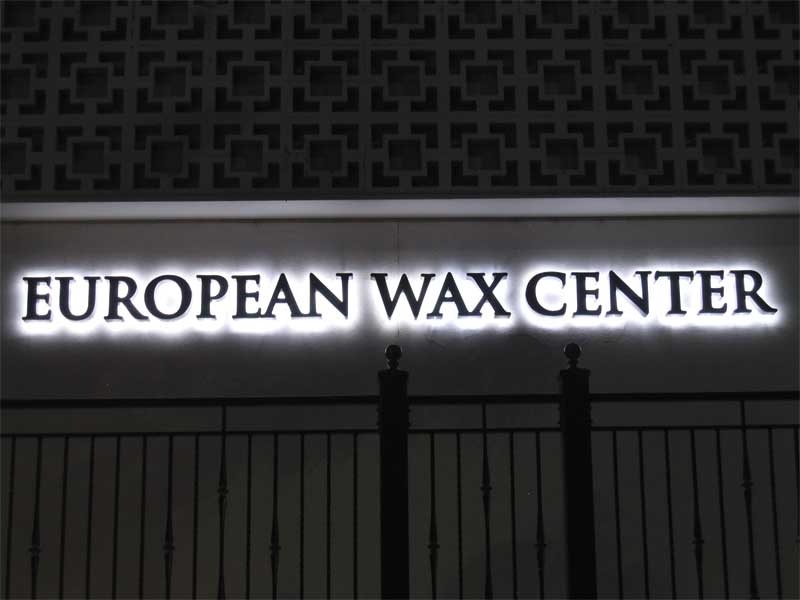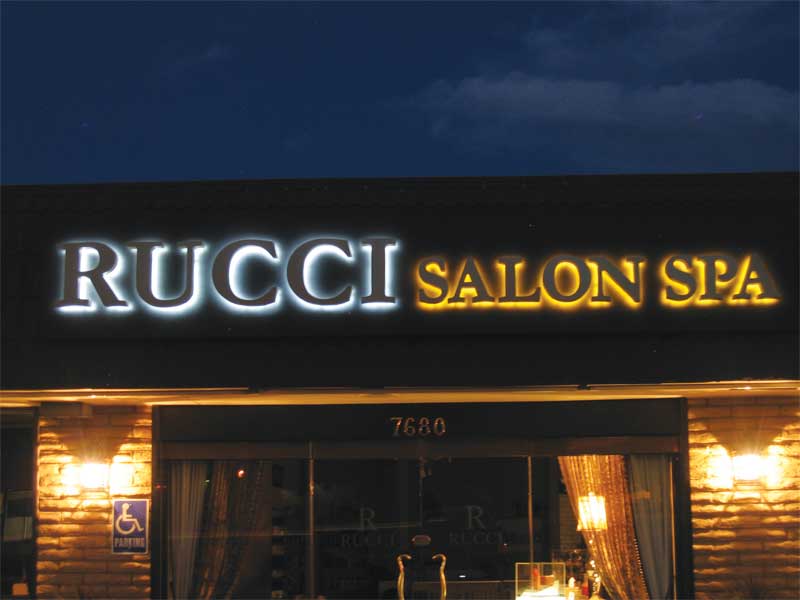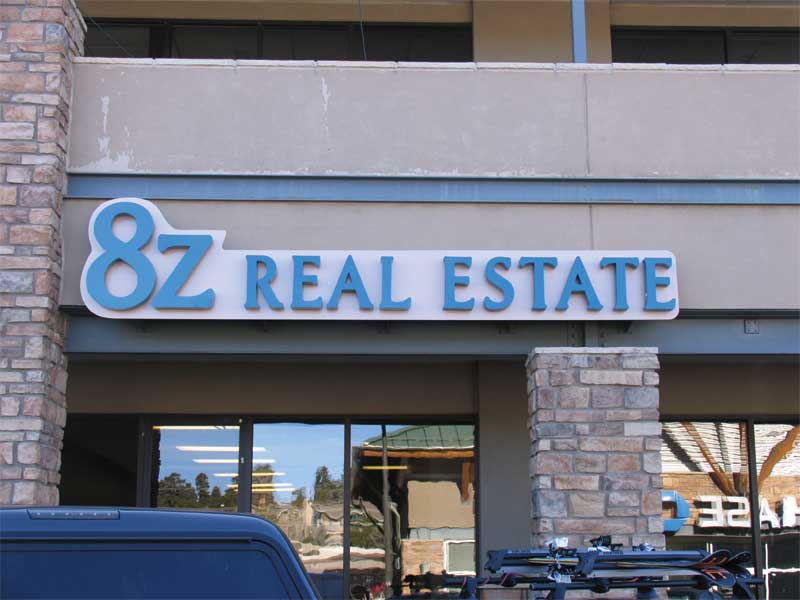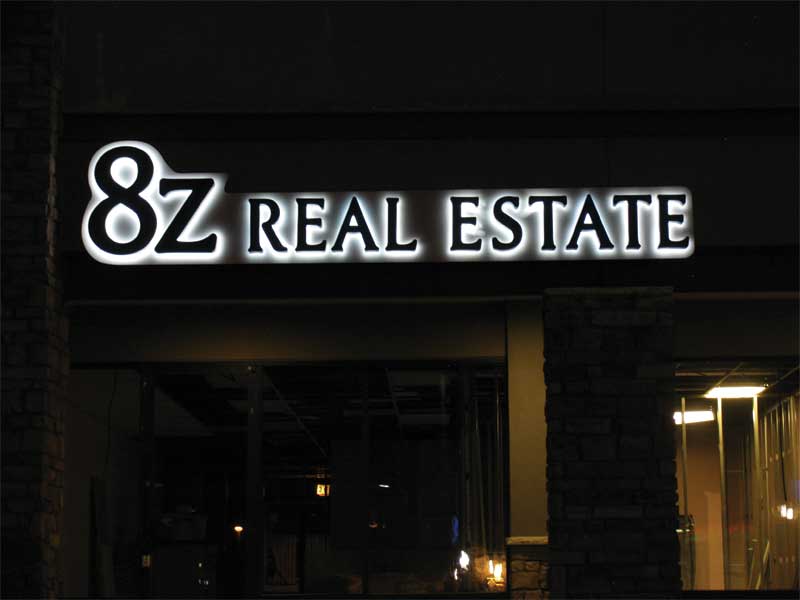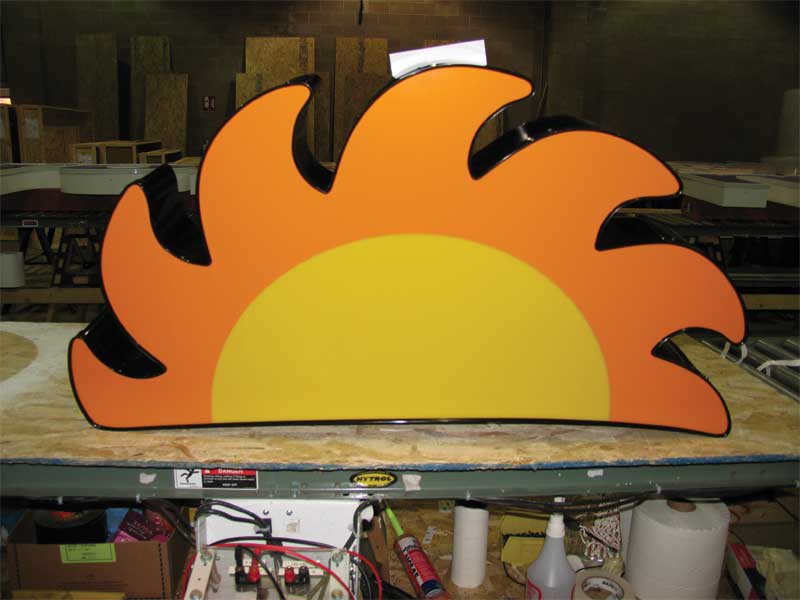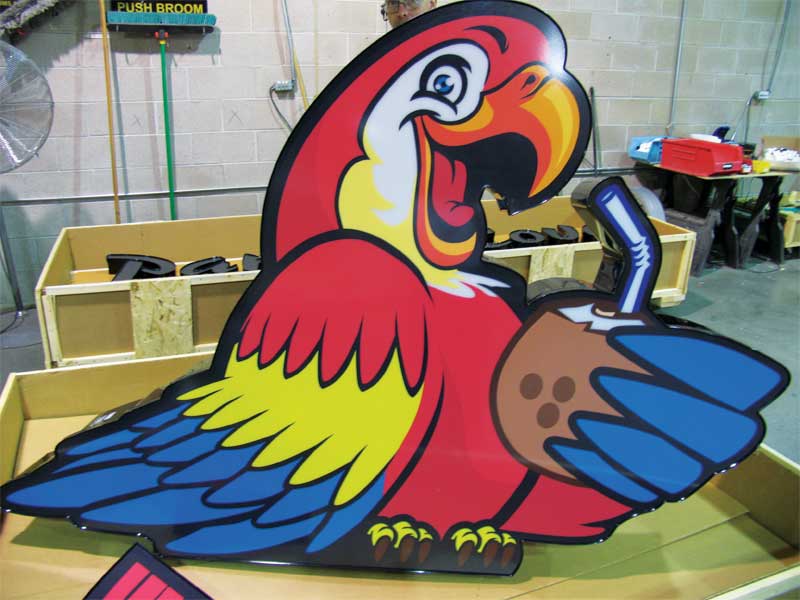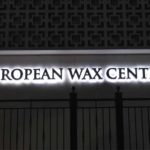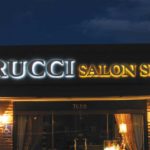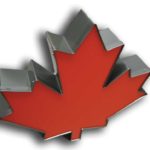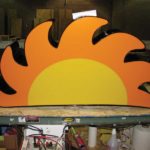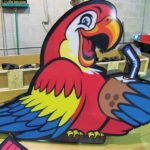Halo-lit
Reverse or ‘halo-lit’ channel letters are fabricated entirely of aluminum, with no acrylic involved. One advantage of this configuration is the aluminum can be painted in any colour to match the client’s branding and/or to optimize the sign’s daytime visibility.
There are some common misconceptions about reverse channel letters. Some people, for example, mistakenly assume white is the only possible colour for halo illumination, as in Figure 6. On the contrary, reverse lighting can be provided effectively in many different colours. Indeed, depending on the installation environment, a halo colour other than white can be helpful in attracting more attention to the sign. Figures 7 and 8 feature examples of this effect.
Reflective backer panels
Reverse channel letters are often mounted directly to a building façade, which can be appropriate in many situations, but can also be detrimental in others; these are cases where reflective backer panels can be useful additions.
For a sign mounted directly to a façade, both the colour and the texture of that façade can influence the halo lighting’s appearance. If white light-emitting diodes (LEDs) are used to halo-light letters on a red brick wall, for instance, the halo itself may take on a somewhat reddish tinge at night.
A backer panel is simply a formed aluminum sheet, painted in any colour, in front of which the reverse channel letters are mounted. The reflective nature of the panel takes fuller advantage of the lighting by amplifying it in the direction of the viewer, while also creating a smoother, more even, clearer and ultimately more visually compelling sign (see Figures 9 and 10).
Logo boxes
The addition of a logo box is another way to help make a channel letter set more visually conspicuous.
A logo box is essentially a contoured channel letter. In some cases, its shape is sufficient to communicate a certain message (see Figure 11). In others, the application of either coloured vinyl or a digitally printed graphic is also necessary.
In this context, vinyl is primarily used for simple colour changes, with signs where no more than three additional face colours are needed (see Figure 12). Digitally printed graphics are generally preferable in other cases where the logo box image requires more than three colours (see Figure 13).
Cost is another factor to consider with these situations. When basic vinyl is used, each of the desired face colours requires its own ‘drop’—i.e. manual placement—of vinyl onto the logo box. A full-colour digital print, by comparison, requires only one drop, as the entire image is a single piece of translucent film with an ultraviolet-resistant (UV-resistant) laminate coating.
So, when a design involves multiple colours or gradients, a digital print is typically the simplest and least expensive option.


